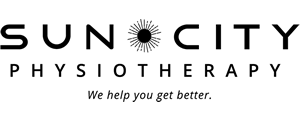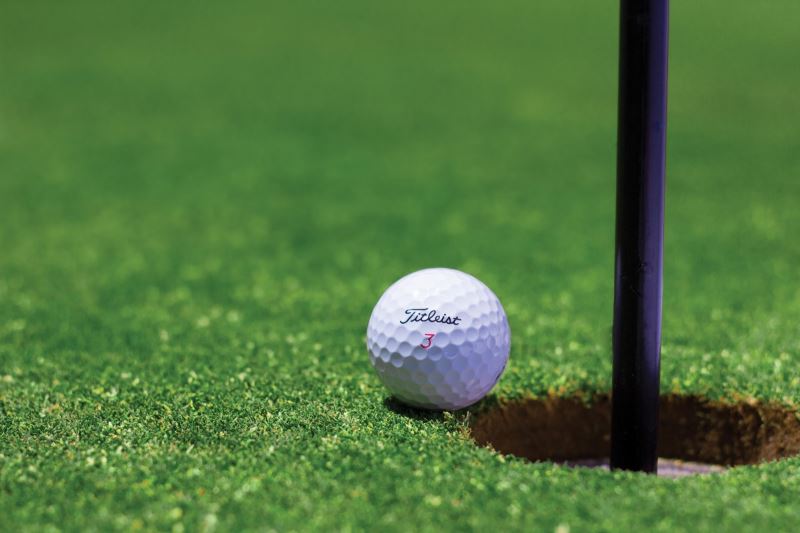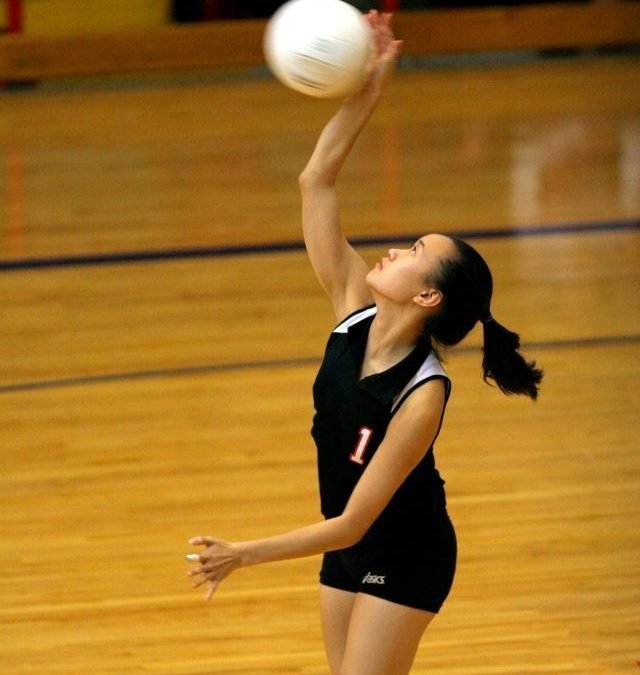Physio Articles
Across Canada, during the month of May there will be promotion of the profession of physiotherapy. Meanwhile, across Canada during the month of May, many people will be asking the question of “What is physiotherapy, anyway?” With National Physiotherapy Month nearing, I felt this would be a great time to answer that very question, and others that I have been asked from friends, family, and clients.
Questions such as:
- What is physiotherapy?
- What do you do?
- Who gets physiotherapy?
- Where can you work?
- How long did you have to go to school?
My dad, while I was undergoing my studies, once asked, “So, you’ll be cracking backs then?”
In short, physiotherapy is the assessment, diagnosis, and treatment of pain, injuries, and a broad range of chronic conditions. It is delivered in a number of ways including soft-tissue techniques (i.e. massage), hands-on manual therapy, modalities, and the most fun (for us) – exercises. Physiotherapy is often a complement with other health professions to help decrease pain, and optimize strength, function and overall well-being.
To become a physiotherapist in Canada now, an undergraduate degree must be completed, followed by a two-year Master of Science degree. The latter involves extensive hands-on practice both in class and in placement settings. The schooling doesn’t end there! Physiotherapists are committed to life-long learning, taking further education to improve current, or gain new, skills. (So to answer my dad’s question: yes, after courses and a specified number of hours of training, physiotherapists can ‘crack’ backs. Although we prefer to use the term ‘manipulate’.)
Physiotherapy isn’t limited to people with acute injuries – the service is also provided for people with heart disease, stroke, amputations, chronic pain, and lung disease, to name a few conditions. All ages and abilities can be treated: from pediatrics to geriatrics and everything in between. Physiotherapy can also be proactive, by promoting healthy living and avoidance of injuries and illness.
There are many settings in which physiotherapists work. The most commonly thought-of environments are the clinic or hospital. Physiotherapy is also provided in retirement residences, long term care facilities, hospices, community health centres, in home, in the work place, on the sports field, and in schools.
When looking at how many systems of the body can be treated with physiotherapy, and all the different environments in which it can be delivered, it is understandable for there to be some mystery around the subject. I hope this was helpful in understanding what the profession is. For further information, you can visit the website for the Canadian Physiotherapy Association (www.physiotherapy.ca), and the BC division (www.bcphysio.org). To learn more about National Physiotherapy Month check out www.npmcanada.ca, where you can find information, take a survey, or thank a physiotherapist. Although, seeing people feeling and functioning better is the best ‘thanks’ of all!

Vestibular Rehabilitation (Dizziness and Vertigo)
It is the weirdest feeling. You get dizzy bending forward or looking up to the ceiling, lying down, getting up in the morning, or even rolling over in bed. It’s like the room is spinning and it makes you feel sick. If you experience this, you may be suffering from Benign Paroxysmal Positional Vertigo (BPPV).
It is estimated that one in every five people will develop vertigo in their lifetime. The most common cause of vertigo is a condition in the inner ear known as Benign Paroxysmal Positional Vertigo. BPPV occurs when there is ‘debris’, or more specifically, a calcium carbonate crystal, which has been displaced within the inner ear. The presence of this displaced crystal within the inner ear can disturb one’s balance and equilibrium, and sense of motion.
These crystals are naturally occurring in the inner ear, attached to a specific structure, and not ‘free floating’. There are multiple causes for the crystals to be displaced but, more often than not, it tends to be spontaneous. Other causes can include trauma (fall, hit to the head, whiplash), high dose antibiotics, age, and extreme changes in barometric pressure.
Most of my patients with BPPV report dizziness with certain positions. Most commonly, it is lying flat in bed, rolling over in bed, getting up in the morning, looking up to the ceiling, and bending forward.
Treatment for BPPV is very effective. It consists of ‘repositioning’ the crystal in the inner ear. This is done through a series of head and body positions, which will move the crystals away from the sensitive hair cells within the inner ear.
Although BPPV accounts for a large percentage of vertigo, it is not the only cause. Talk to your doctor or physiotherapist certified in vestibular rehabilitation if you have these symptoms, or think you may have BPPV.
Robina Palmer is a registered Physiotherapist and co-owner of Sun City Physiotherapy.
Robina is a graduate of University of British Columbia’s School of Rehabilitation Medicine. She has practiced in sports and orthopaedic rehabilitation in various clinical settings throughout the United States and Canada.
Physio Articles
It’s that beautiful, sunny time of year again. It’s time to hit the tennis court, walk the golf course, hop onto the bike, or participate in other active ways of enjoying the Okanagan spring weather. As you increase your strength and endurance through these activities, be sure to also keep flexible. Make stretching a part of your routine.
Stretching describes a maneuver used to increase flexibility of soft tissue, lengthening the structures that have become shortened or stiff. Shortening can occur from situations such as immobilization (i.e. being in a cast), prolonged postures, weakness or imbalances of muscle groups, injury, or developmental conditions. Vigorous activity can also lead to shortening and tightening of muscles.
Benefits of stretching
Stretching improves flexibility by increasing the range of motion of a joint and decreasing stiffness in a muscle. This improved flexibility can improve performance in some sports, such as gymnastics, dancing, martial arts, or goalies in hockey. In other situations, improved flexibility can help obtain better posturing or help with pain. Other goals of stretching are to reduce the risk of muscle strain, reduce muscle soreness, and enhance mental and physical relaxation.
The risk of injury from stretching exercises is low when done correctly (described below), and when held for a short duration pre-exercise (less than 8-10 minutes of stretching per area), won’t compromise muscle strength.
When to stretch
It is important to ensure that you are warmed up prior to stretching. It is best to do so actively, such as by doing a light jog, bike, or quick walk for 5-10 minutes. If you are stretching pre-activity, do so after your warm-up regime. If stretching post-exercise, it follows the active cool-down.
The American College of Sports Medicine (ACSM) recommends stretching to be a part of overall fitness program, performed for the major muscle groups at least 2-3 times a week. In some cases, stretching should be performed daily.
How to stretch
Two of the more common kinds of self-stretching are static and dynamic. Dynamic stretches are usually performed pre- rather than post-exercise. These take the joint through the range of motion rather than being sustained at an end position. These exercises should be performed as instructed by a physiotherapist or your coach.
For static stretching, go into the position slowly, just to the point of feeling tension, not pain. Hold the position for 15-30 seconds if pre-activity, and the full 30 seconds if post. It is a low intensity stretch—it should not feel strong. If you feel like you are unable to hold the full duration, back out of the position slightly. Don’t bounce while here—just hold the position. When the 15-30 seconds is up (I recommend using a stop watch, or sing the ABCs—you’d be surprised at how long it actually is!) slowly release the tension, not allowing the muscle to recoil. The ACSM recommends 3-5 repetitions per stretch.
In order to avoid injury, it’s important not to overstretch, by taking the posture too far. The position should not cause discomfort or pain, and should be within a normal range of motion for the joint being exercised (don’t hyperextend).
Overstretching can do harm by causing strain, hypermobility, or even instability. Make sure that proper alignment is used—if you are unfamiliar with a stretch, seek assistance. Otherwise the exercise may not target the proper muscle, and can even cause stress to other structures
In some cases, extra help is needed. A trained individual, such as a physiotherapist, can use manual (hands-on) techniques to help you through the maneuver. Sometimes special techniques, such as ‘contract-relax’, will be used.
What to stretch
Post-activity, you’ll want to focus on the muscles that were just exercised.
Typically the muscles most frequently shortened are the hamstrings, calves, hip flexors and pectorals (front of the chest).
If unsure of how or what to exercise, or if you have an injury, be sure to seek advice from a trained individual to ensure you’re getting the maximum benefit from your stretching program, safely.






